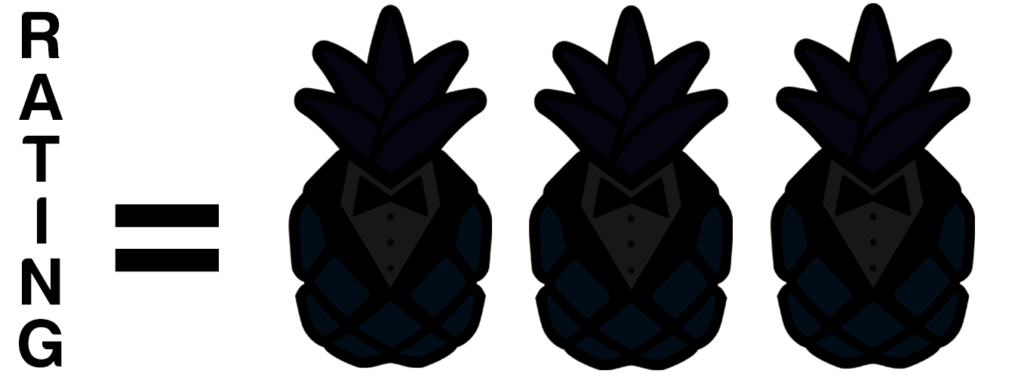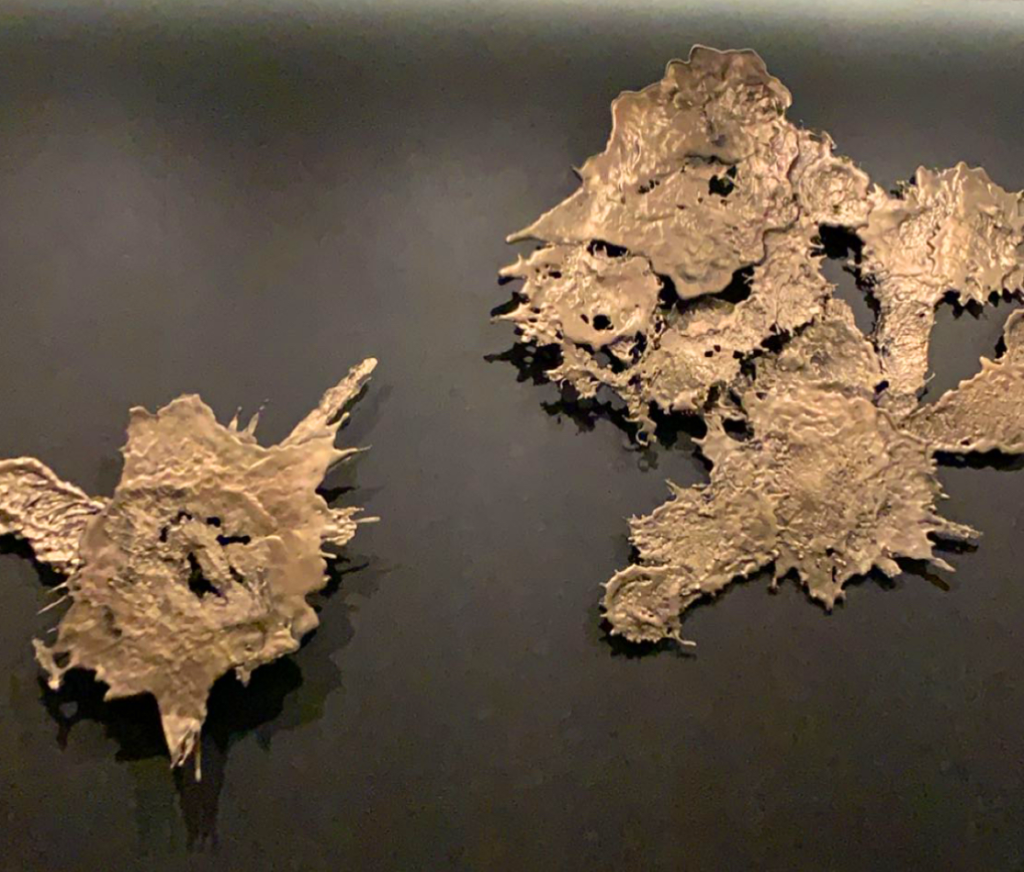Despite what you may have heard, Mako does not serve the bestsushi in Chicago. Sure, it is a stunning, special venue. The staff is polished.The branding is slick. There is a well-priced beverage pairing and a decentwine/sake selection to boot. You may even go so far as to say that Mako is oneof the better Japanese restaurants in the city. But in terms of sushi?Omakase signifies a formal menu structure shaped by tradition and technique.The sushi at Mako—which is rarely even made by Chef B.K. Parkhimself—bastardizes the art of omakase. Do not let the glitz and glamour foolyou—within Chicago’s recent high-end sushi boom, Mako may very well rank as theworst of them all at a purely technical level.
Self-described as “one of the country’s premier sushi chefs,”Korean-born B.K. Park is undoubtedly the most experienced sushi chef inChicago, having spent two years at Tsunami, seven at Mirai Sushi, three atArami, and six years at Juno (where he is still chef-owner alongside his workat Mako). You endured a rather forgettable $110 omakase at Arami last year, butthat was long after Park had left the establishment. Other than that, yourecall visiting Juno once during the summer of 2015. Not knowing the restaurantoffered a ($150) omakase at that time—or, perhaps, not knowing what an omakasewas at all—you had a pleasant-enough àla carte meal. Some of the signature smoked dishes struck you as gimmicky, andthe restaurant seemed to distinguish itself more through creative plating thanexceptionally crafted flavors. Still, you remember liking Juno but decidingthat Momotaro offered much of the same experience (and then some) in your ownbackyard.
By the time Mako opened in March of this year, you had made your waysequentially from Sushi-San’s omakase ($88) to Omakase Yume ($125) to Omakase Takeya ($130) and then, finally, to Kyōten($220) as they each set up shop in the city. You visited each establishmentmultiple times and, drawing on your formative experiences eating at Masa,Ichimura, Soto, and Nakazawa in New York City, you declared Kyōten a clear winner. The other restaurantscertainly represent good relative value. They are a perfect way of cuttingone’s teeth and learning to distinguish the fine details that define a morerefined sushi-making technique. Yet price point does matter, for moreprized fish simply cost more. A higher price point should also, ostensibly, payfor a more intimate environment and direct access to the chef. Kyōten did not simply charge more than itspredecessors, its chef backed it up with showmanship and mastery of his craft.Otto Phan dreamt of bringing Michelin-starred sushi to Chicago, dreaming farbigger than the established Chicago entities who had recently shifted towards theomakase format. To you, he succeeded (though you will save a discussion ofMichelin’s madness for a later occasion).
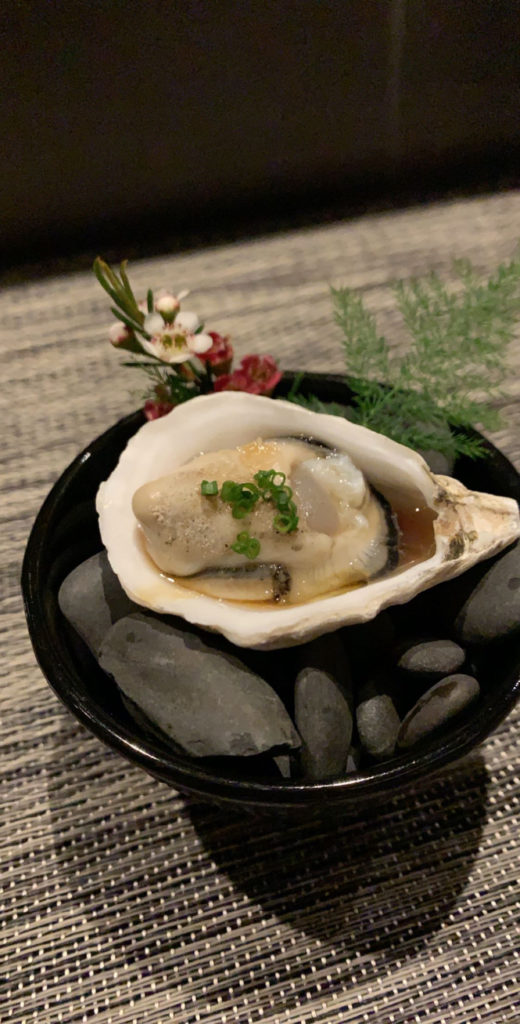
B.K. Park, too, dreamt of Mako for many years while running Juno. Itwas the “passion project” that would transform his omakase from an expensivesideshow at an otherwise average Japanese restaurant into the main event. Yet,despite working in Chicago for decades, Park never took the plunge until fourrivals had opened their doors in the city. Rather than be the one to shoulderthe risk involved in teaching Chicagoans how to enjoy proper nigiri, thechef waited in the wings for more than half a year as his comparably unknownrivals ushered in a new era for sushi lovers. Just keep that in mind. Makorepresents both the culmination of a career spent in Chicago and—as a “passionproject”—a total cop out. Park never believed in opening a sushi bar omakasethat could stand on its own, always preferring places that offeranonymously-made à lacarte dishes to “pad” the experience and put more asses in seats. Even today,Mako stands as the only omakase-only restaurant in the city that offers tableseating (a bastardization of an already-bastardized experience, but you’ll getto that soon). Nonetheless, once other chefs had cleared the way, Mako openedbearing a $175 price point in Chicago’s West Loop neighborhood (also home toOmakases Yume and Takeya).
You have eaten at Mako a total of five times this year. The firstoccasion occurred just two days after its opening. The second? Four days afterthat. You swore you would never return to the restaurant after that, but youyour head was turned by a guest chef dinner in mid-August. Then, in earlyDecember, another guest chef dinner drew you in. Chef Park, by then, hadnoticed you had visited twice in quick succession at opening then only returnedfor these special menus. He insisted it would be worth returning for the normalmenu, and so you reneged and made your fifth and final visit one week later.This review will seem harsh, but you feel confident in your assessment of therestaurant at this point. Further, you feel both Phil Vettel and Michelin arederelict in their duty to champion good food first and foremost and notbe distracted by the sort of smoke and mirrors Mako makes use of to mask whatis ultimately inferior, forgettable sushi. Though Mako may please the amateursushi connoisseur more reliably than Kyōten,these critics do a disservice to the city by championing the “safe” choice. Theyaid in putting lipstick on a pig that bears no ultimate resemblance to the artof omakase at its most transcendent.
Anyway, let’s begin. Upon your first visit to Mako—the Sunday eveningfollowing its Friday opening—you were immediately impressed by the level ofinvestment in the restaurant’s décor. The outer signage is sleek andunderstated. Perhaps it is even easy to miss, given that Mako occupies a quietstretch of Lake St. with Momotaro one block to the west, Oriole one block tothe east, and Au Cheval just one block south. The restaurant’s metal paneleddoor blends well with the larger edifice—an apartment building called TheParker (which boasts both a cycling “bar” and a rowing “house” adjacent to eachother). But be careful! That door is so heavy that you may doubt the restaurantis actually open. Be sure to give it a hefty tug, or else you may stand out inthe cold like a fool waiting for another diner with a stronger grip to lead theway.
The front door leads to a small vestibule where yet another door leadsto a similarly-sized lobby with two short benches and a closet for coats. Thereis no host stand per se but, rather, an iPad. Someone with a managerialpresence greeted you in the lobby on that first visit. Someone else, bearingthat same air of experience, greeted you upon your second visit. However,visits three, four, and five saw the restaurant a bit shorter staffed, and,thus, you had to wait a moment for someone to come out from the back of thedining room to welcome you. This is not a huge blemish on the experience, butyou have observed guests enter and seem unsure of just where they should standand just what they should do. Also, given there is no dedicated “host,” detailslike offering to take customers’ coats can be overlooked as staff members tendto their other obligations. But it is no matter, for you would rather Mako putthe price of its menu towards pursuing gastronomic pleasure and not merelyoffering extra pleasantries of service.
After checking in, you are led just a few steps into the dining room.The space draws on a palette of cool greys accented with off-white chairs,polished wooden platters, and dramatic lighting (expertly cast over eachindividual place setting). On one wall (in front of which the table seating islocated) stretches a long, textural canvas of faded blue that seems to imitatesea foam. It’s sort of a poor man’s Deep Water No. 1 (the staggeringlybeautiful centerpiece of Le Bernardin’s dining room). On the wall opposite ofthat—that is, behind the sushi bar itself—hangs an abstract assortment ofthree-dimensional shining gold splotches. It’s the sort of soulless, “artsy”installation you love to hate, but, here, it really works. Mako’s setting is gorgeous,and you cannot find a single thing that is out of place. The sushi counterseats twelve while the tables accommodate another ten customers (and can bejoined to allow for larger parties). You always choose to sit at the counterand, on that first visit, are given two seats at its far end (opposite the lobby).
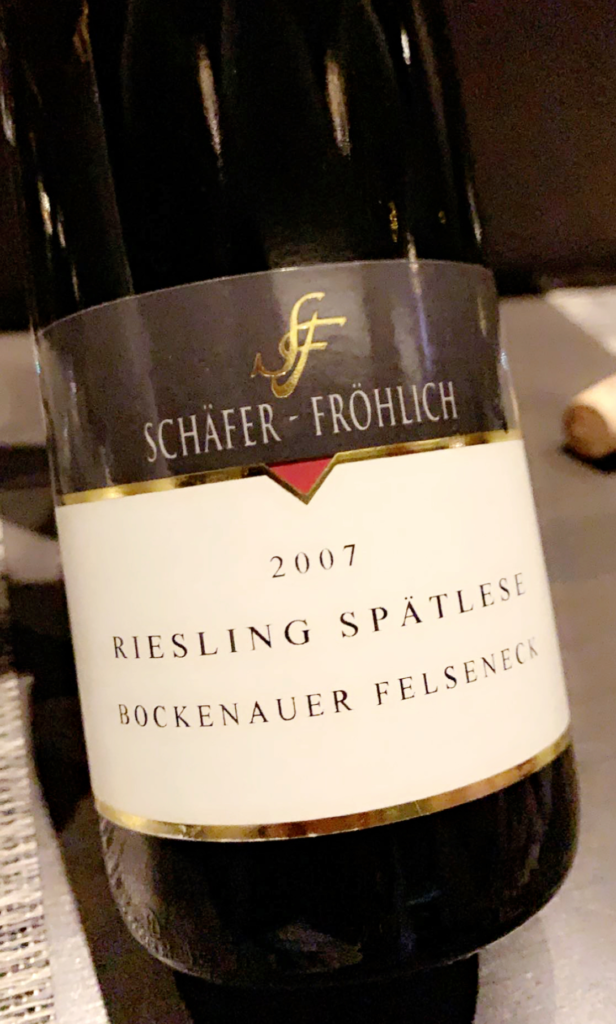
You can the beverage list, which attractively presents threecocktails, a dozen sakes, and about the same number of wines alongside a singlebeer, a few Japanese whiskies, and tea. The wines are rather forgettable—think villagelevel Bourgogne and nonvintage Champagne—but they’re nearly all under $100.The sake list ranges from $80 to $360 with most bottles landing somewherearound $150. They’re all Junmai Ginjo, Daiginjo, and JunmaiDaiginjo bottlings, which you think is a good choice given the purity andsubtlety of flavor found in sushi. The whiskies—a few Nikka bottlings, aYamazaki 12 Year, and a Hibiki Harmony—are nothing to right home about (but arepriced fairly enough). Apart from its list, Mako offers a beverage pairing for$85 and charges customers $40 per bottle as corkage. All in all, it’s anaccessible list that will not intimidate anyone new to the omakase format.There’s nothing on it that screams “value” or excites you, but lovers of sakemay enjoy having so many stylistic options in the same price range. On thisfirst visit, you order cocktails and choose to do the pairing. On allsubsequent visits, you will bring your own bottles of wine and stomach thecorkage.
The whisky cocktail goes down easy, but, once dinner service starts,the trouble begins. You see, those twelve seats at the sushi counter areactually separated into two zones of six. You quickly realize that while halfof the dining room has their meal made by “one of the country’s premier sushichefs,” the other half pays the same price for an anonymous apprentice to touchtheir food. Your heart sinks as you see B.K. (who you recognize from hiswonderful portrait on the website) pass by your station and post up at thecorner nearest to the entrance. Your sushi chef—middle-aged, goateed, andwearing a hoop earring (not unlike that which also adorns B.K.)—takes his placein front of you. He’s clearly experienced—you would assume he’s been at B.K.’sside for a while—but quiet and lifeless. Not that B.K. himself has much to say.He welcomes familiar customers and, otherwise, simply recites the ingredientsthat make up the food.
Needless to say, you are disappointed not to have the “master” himselfcooking for you. It’s a feeling that dogs most of fine dining, wherecustomers—drawn to spend hundreds of dollars due to the artistry of some famedchef—covet even a glimpse of the maestro at work. As mentioned in yourreview of Alinea, Grant’s presence at the restaurant is not required forit to function well but, nonetheless, works to paper over some of theexperimental flourishes that fail to land. To wit, you have had many a greatmeal at Eleven Madison Park without ever seeing Daniel Humm in thekitchen. However, the best meals of your life have certainly been atrestaurants like Brooklyn Fare, Manresa, Blue Hill at Stone Barns, Atera, andSmyth where the head chef can be reliably expected to be there.
Sushi, however, is another matter altogether. The head chef of anomakase restaurant is not so much of a creative director—content toconceptualize dishes and provide the training and process for their timelyreplication by the rest of the team. Rather, the sushi chef is a repository oftechnique, of expertise, that cannot merely be copied by lesser cooks. Theapprenticeship system is one in which the slightest of movements and smallest“tweaks” of flavor that separate “good” sushi from “great” are passed down inan intuitive way. The master may be teaching his underlings how to, ultimately,execute “his” menu, yet that sense of culinary ownership is built on afoundation of fish and rice handling that may take decades to learn. So, intheir efforts to meet the standards of the master, students, by osmosis, aretrained in the very core of their craft. It’s a training that, even if it couldconcisely be expressed in some sort of textbook, would amount to: “repeat thismovement, hone in on that flavor contrast ad infinitum.” Thus, chefslike B.K. Park are not merely businessmen, not merely leaders, but mentors andcustodians of an artform whose preservation depends on hands-on instruction.
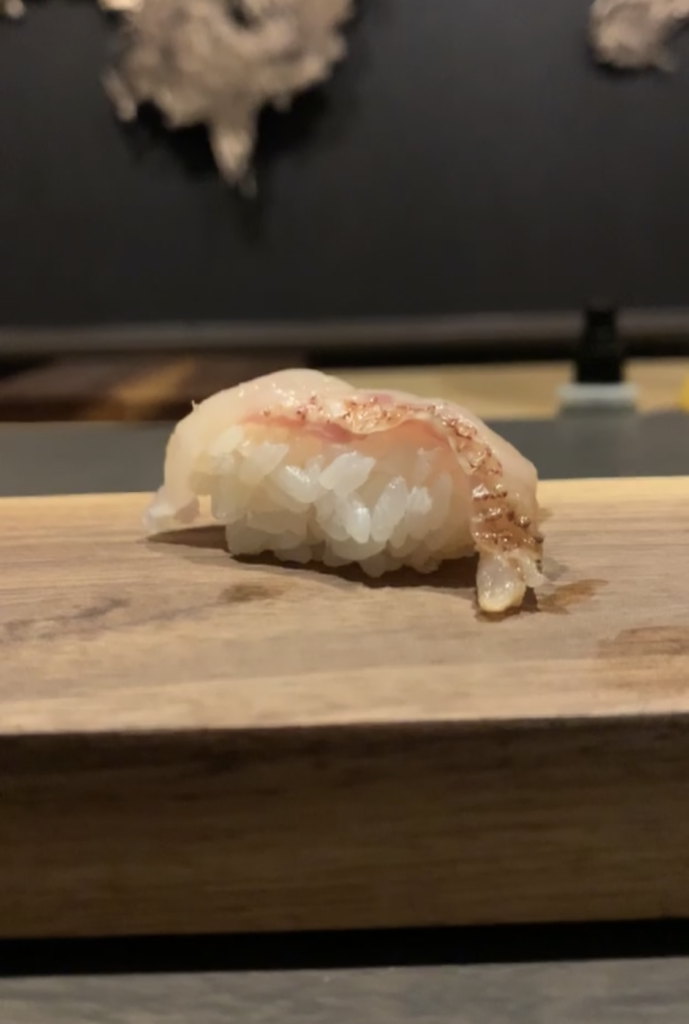
Sure, in all your visits to Masa, you never had Masa Takayama himselfprepare your sushi. Sure, it did get to you, and it’s a reason youcame to prefer other establishments that only opened their doors when the head,named chef would be working. In Japan, for example, sushi restaurants arerather careful about warning customers (even tourists) when an apprentice willbe manning the counter. Not only that, but the price of the omakase wouldalmost always be reduced by $30-$50 of whatever the master charges. Thosepaying $600 (per person) for a meal at Masa may be justified in feeling jiltedthat the great chef is not touching their food. However, to be an apprentice atMasa—to be one worthy of holding down the counter which Takayama has ascribedhis name—is, indeed, an honor. One may track the brotherhood of former Masaapprentices and find many successful chefs and restaurateurs in their ownrights. So, if not Masa standing before you at Masa, it is at least clear yoursushi is coming from a pedigreed individual. But what to make of Mako?
Mako, surely, does not bear Chef Park’s name. Rather, as the websitedescribes, the restaurant is “named after a species of shark known for itsspeed, precision, focus and instinct.” Despite B.K.’s reputation withinChicago, Mako’s promise is not a personal pledge. His name, his face is notfront and center—just, as you imagine, ordering Juno’s omakase was never anassurance that B.K. would be cooking for you. And, given how many places Parkhas opened over the years, perhaps it is smart to somewhat disassociate hispresence from the day to day operation of the restaurant. Plus, as far as youcan remember, only Morimoto, Naoki, and (soon to be) Nobu have opened sushirestaurants in Chicago bearing the chef’s name.
So, as you sit facing Park’s apprentice on that first visit to Mako,you cannot say you feel too cheated yet. Sure, the restaurant chargesthe same price regardless of who is cooking your food. Yes, the case hasn’tquite been made as to just whom this apprentice is (and what experience hewields). B.K., for one, is hardly a talker, and his understudy is, still, evenmore quiet. Yet twelve counter seats, indeed, is too much for one man tohandle. The space is still so beautiful, and, oh, maybe Chef Park will stillfind his way to prepare some part of the meal for you.
The meal begins with what would become a familiar set-piece: a trio ofassembled bites that you think can appropriately be termed “Michelin bait.” Onthat first visit, you received a luxurious trifecta of monkfish liver (withosetra caviar), king crab (with uni miso, A5 wagyu butter, and potato chip),and abalone (“braised with house soy” and liver sauce). The second visit—laterin that same week—saw the monkfish liver swapped with that of a red snapper(but otherwise similarly prepared). Your most recent visit, last week, saw theliver swapped out altogether for a twirl of lean tuna (still topped withcaviar) and the abalone replaced with a smoked Japanese bonito. But the kingcrab, as always, remained unchanged. There is no doubt that any one of these triosmakes for an attractive first plate; however, it demonstrates the same sort of“shock and awe” tactic seen throughout the environment. Any of the bites,served alone, would be singled out for being much too small. Served together,however, they impart the feeling of luxury (though those luxurious ingredientsare actually being used rather sparingly). Ultimately, these bites are a tastystart sure to more or less please everyone due to the basic calculus oftextural contrast being employed. However, looking back upon the meal’sconclusion, customers must surely wonder how morsels no bigger than the head ofyour thumb each count as a singular “course” on the menu.
Next arrives another wonderful little plating that the restaurantmakes use of for each of its menus. Four slices of sashimi sit on a halvedstalk of bamboo that juts out horizontally from a bowl that could double as aterrarium. A leaf sporting a schmear of wasabi is nestled perfectly under thebamboo (and also extending off of the edge of the piece). The presentation isbound to impress first-time customers, but the quality of the dish just aboutends there. The sashimi itself—which often includes amberjack, salmon, andfatty tuna—is good, like the opening bites, but not great. Perhaps you would say“fair” instead of “good.” The word “forgettable,” again, comes to mind: each ofthe fish chews easily but does not amaze with distinct differences in flavor ortexture. In fact, there’s just not much flavor to go around, even with theadded wasabi. What more can one expect? The fish is not of any special qualityand receives only the most basic description. It is cut by the apprentice andwhisked to the kitchen, where it adorns a fancy service piece andreappears—with greater rigidity—having sat long enough to plate the full dozen.It looks pretty, sure, and will impress the diner that is altogether new toomakase. But, to you, the dish merely shoehorns sashimi into the menu with nointention of doing it well. Rather, the fanciful plating is just another shinyobject to distract those whose palates cannot pick out good from bad examplesof the craft.
During the first two visits in the month of March, the sashimi wasfollowed by a chawanmushi flavored with shiitake mushroom broth. You certainlynever mind seeing this egg custard dish, which—when well executed—has apleasing richness and deep (yet subtle) sweetness that envelops anyaccompanying ingredients. At Mako, the custard is a bit watery. You suppose the“water” is actually the mushroom broth, but it doesn’t taste enough of shiitaketo convince you. Texturally, the chawanmushi breaks apart into soft chunks thatpossess the slightest of jiggles when scooped with a spoon. The chunks yield tothe tongue’s pressure and turn into a soft cream as they slide down yourthroat. You may even go out on a limb and call the custard “silky,” with a fewpieces of shiitake hidden below providing a nice textural contrast.Nonetheless, the dish just does not offer any dominant flavor from either themushroom broth or the egg. Certainly, chawanmushi is a dish that demands a softtouch, but you hate to see an otherwise agreeable texture wasted on what tasteslike a poor example of egg drop soup. In December, the chawanmushi was replacedby a solitary Kusshi oyster that came seasoned with tomato, trout roe, andoyster leaf. You’re not quite sure why the warm custard was removed in time forcold weather. Perhaps, you can acknowledge, the chef didn’t think the dish wasup to snuff. Otherwise, the oyster was just “okay.” It did not possess enoughbrine or flavor of its own to taste much like anything. Rather, it made foranother pretty picture—and should a raw oyster really be following the sashimior be placed before it?
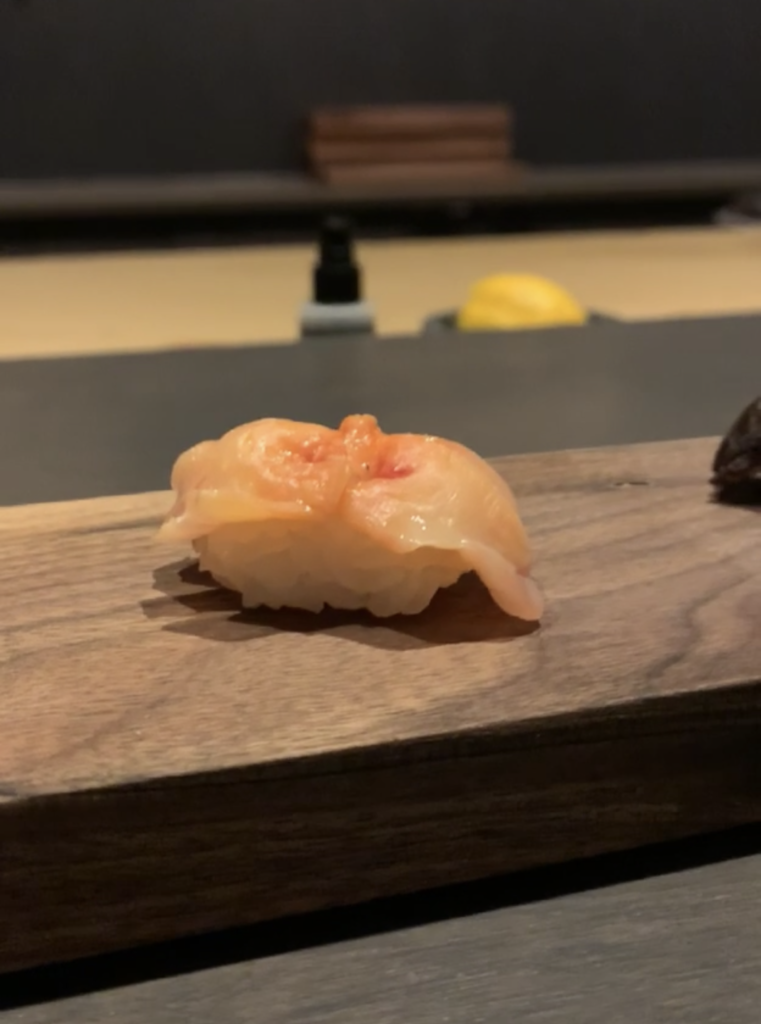
At this point in the meal, guests are served the first of threedistinct “flights” of nigiri. Each of the flights, then, is followed with acooked dish from Mako’s kitchen before the menu reverts back, once more, tosushi. Needless to say, you are not a fan of this format at all. It deniescustomers the opportunity to discern the textural intricacies that distinguisheach and every bite in the sushi sequence from one another. It confounds thepalate by constantly switching between raw and hot food, rather than using thecomforting warmth of a cooked dish to soothe the stomach and close out themeal. The format only seems to lighten the load on the two sushi chefs who, toremind you, are only responsible for six customers each. More cynically, youthink the cooked dishes are a means for the restaurant to hedge its bets withcustomers who might not enjoy the sushi itself. This can particularly be seenin the restaurant’s online reviews, where customers single out these cookeddishes for special praise while altogether forgetting what nigiri was served.Again, this points to Mako being far more of a Japanese restaurant than onededicated to the craft of sushi. But, for now, you digress, deigning to reviewthese cooked dishes first then returning to appraise all of the nigiri.
First, during the March menus, came a fillet of sea bass hidden undera crisp of green tosaka seaweed (that doubled as the “fish skin”). Melt in yourmouth tender, the fish found a wonderful accompaniment in some charred frisée.The bitter, blackened notes worked alongside a generous dusting of yuzu zest todraw out the bass’s sweetness and create a dish that was flavorfully andtexturally complete. It could have very well been the best dish of all on theopening menu. But why is it coming from an unknown cook in a hidden kitchen?You imagine (or hope) the dish was designed by Chef Park, but this mostsuccessful dish misses the touch of his hand. In December, the sea bass wassubstituted for an arctic char served with burnt scallion ponzu. This, as faras you can remember, retained its own (charred) skin and suffered for having abit too much crunch and too much of a carbonized flavor when compared to thebass. Still, you are glad to see the restaurant take some risks withthese cooked dishes and imagine their target audience was still pleased by thechar.
Following the second flight of nigiri, guests are served what might be called the “main course” of the Mako’s experience. In truth, the fact that a cooked dish could occupy such a place on the menu makes for, perhaps, the strongest argument that the restaurant does not really fit into the omakase tradition. In March, the main course took the form of roast duck breast served with enoki mushrooms, a duck sausage, and a tableside pour of warm consommé. Perfectly pink on the inside and boasting a well-crisped skin, the three slices of duck each customer receives are hard to find fault with. The lone piece of duck “sausage” is no bigger than a quarter but offers, as it should, a more concentrated duck flavor than the breast. The enoki mushrooms providing a pleasing crunch and a bit more “body” to the dish, which—thanks to the textbook consommé—is wrapped up with a pretty little bow. Guests must get to this point of the meal and wonder if they’ve been transported to another restaurant. Such is the difference in execution between the sea bass, the duck, and everything else. Like the sea bass, the duck would be replaced during your December meal. There, instead, you were served slices of squab breast adorned with the bird’s liver and a leek soubise. It, like the arctic char, offered an interesting variant on the more familiar dish; however, there is no question it is inferior to the former duck preparation. So, again, while you appreciate that Mako retools some of the cooked dishes it uses to anchor the meal, you are left wondering if the restaurant is a bit of a “two-trick pony.”
Following either the duck or squab, customers receive one more flightof nigiri before moving into a series of final sushi bites and dessert. Thatmakes now the right moment to address the nigiri in totality, the verylifeblood of any omakase experience. While you are certainly not one to saythat you know how great nigiri is made, you have eaten at several of thegreatest sushi restaurants in Japan and would say you have an intuitive senseof what the chefs are going for. First, of course, there is the fish. How freshis it? Which parts are most desirable? How artfully is the fish butchered, andhow is its texture enhanced via careful scoring and shaping of a given piece?Perhaps, as in the edomae tradition, the fish will not actually beserved “fresh” but, rather, marinated and preserved for some course of time toaccentuate its flavor. The fish may also be topped with any number of garnishesand glazes ranging from the traditional (yuzu, ponzu, chives) to the luxurious(caviar, truffle, uni butter).
Once the fish has been cut to make nigiri, it is destined to come intocontact with rice. The chef must, first, decide on a particular grain and thenperfect its preparation. This means not only cooking it properly, but seasoningit just right using a carefully chosen blend of vinegar, mirin, and otherthings of that nature. The exact ingredients (and, more so, their ratios) thatgo into seasoning sushi rice are often a closely-guarded secret, as thismixture will provide the foundational flavor from which each individual pieceof fish may express its own personality. Wasabi (which, at this price point,had better be “real” wasabi and freshly grated) must also be carefully wielded,as it is typically placed between the bottom of the fish and the top of therice.
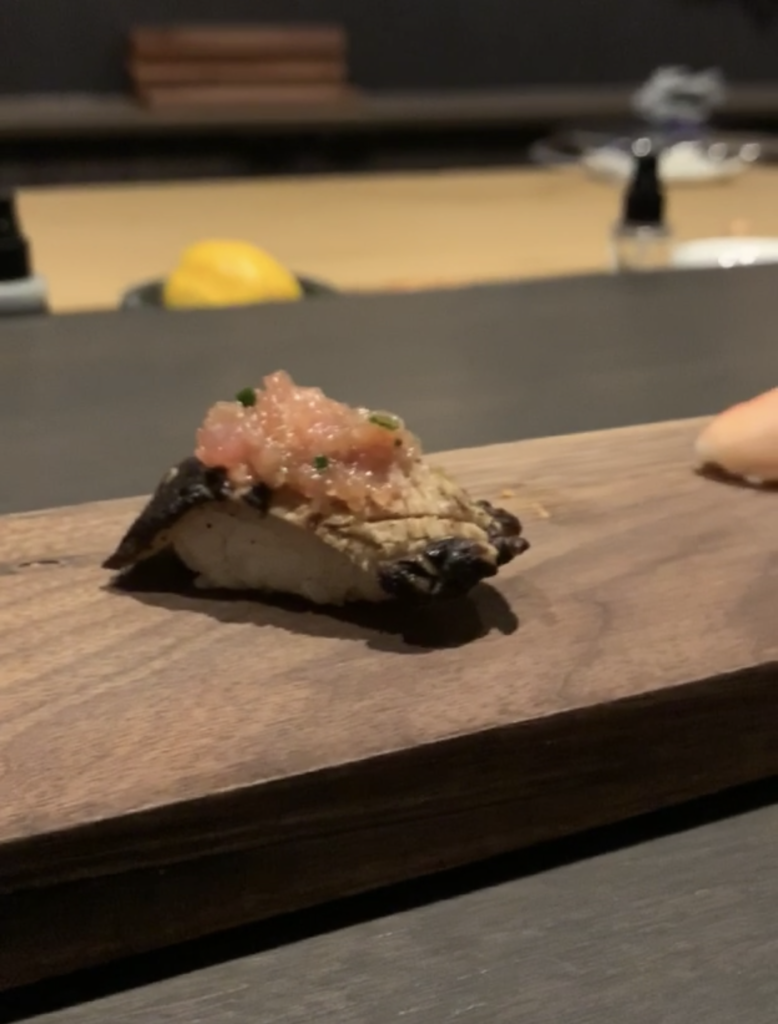
Once the rice is cooked, seasoned, and stirred (ideally, as close toservice as possible), the real fun begins. Just as the fish’s flavor must be insync with its accompaniments, the fish’s texture must be carefully molded inline with that of the rice. This, in truth, is the most difficult part of thewhole operation: crafting a rice that is soft enough so as not to interferewith the melting texture of fattier fish but can also hold its form with piecesthat possess a bit more “chew.” It’s all, obviously, done by hand. By feel.And, though the lightning-fast hands of any sushi chef are sure to impress theamateur onlooker, it takes an uncommon mastery to blend fish and rice in such away where the “whole” nigiri is more than the sum of its parts. Being served bythe “master” (rather than the apprentice) is really an assurance that thetexture of the rice will be as good possible. For, in some restaurants, anapprentice may be trusted to slice all of the fish but never given dominionover seasoning and shaping the rice. This is also why the idea of the “sushicounter” and sitting at said counter is so important. The very best rice isalways on the verge of breaking apart and must be handed to the guest and eatenas soon as possible once it leaves the chef’s hand.
Across Mako’s nigiri flights—which, as is custom, move from lighter tomore heavily flavored fish—you receive bites of golden eye snapper, scallop,fluke (with truffle salt), salmon (with ponzu), horse mackerel (with ginger andchives), shrimp (with apple slice), various types of tuna, Hokkaido sea urchin,torched wagyu beef (with ramps), and glazed eel (with roasted sesame seeds).Other than the scallop—one of your very favorite pieces, and one that is hardto come by at the other omakases in town—you cannot say any of Mako’s nigiri isexceptional. You cannot even say that it’s “good.” It is average, and here’swhy. The sashimi should have been the first clue that the fish, while there wascertainly nothing wrong with it, did not possess any particularly captivatingtexture or flavor. If each of those pieces could barely be distinguishedfrom each other when eaten plain, what hope is there once combined withthe rice? At least, then, you could rely on a kick of vinegar, a touch ofwasabi, or whatever other zany garnish to carry the day. At the veryleast, the warm rice would work to liven up the forgettable fish.
Sadly, if the fish itself is forgettable, then Mako’s sushi rice isoutright bad. Rather than slice all of the fish then individually shape andserve each piece of nigiri to each of the customers in turn, Mako’s modusoperandi is to make and serve nigiri six at a time. During the two chefcollaboration dinners you attended (whose menus, otherwise, are too differentfrom the restaurant’s standard offering to merit inclusion in this article),the nigiri was actually made twelve at a time. While, obviously, thisdecision ensures that all customers are served their sushi at the same moment,it represents an absolute cop out on rice quality. Given it takes a minute ortwo to assemble all of the half dozen pieces, the rice cannot be too soft. Itcannot be anywhere close to the “platonic ideal” of delicately breaking apartin the mouth, for the nigiri would implode on the cutting board during itsextended stay. Rather, Mako makes densely packed, lifeless rice that growsstiffer and colder the longer it sits but that does, indeed, stay together. Forall you know, that rice isn’t even flavored (for any amount of vinegar isimperceptible)! The restaurant consciously chooses to embrace an “assemblyline” mentality and cuts corners right in front of the guest. Most of thosecustomers don’t know any better, but they surely deserve more for $175.
Thus, when fish and rice are finally combined during Mako’s threenigiri flights, the end result is altogether unremarkable. Bite after bite, thefish (which could also do with being sliced more generously) flounders whilethe rice remains a slap in the face to any sushi chef who gives a damn abouttheir craft. All that is left are the garnishes, the gimmicks that—were theynot there—one would hardly recognize they were being served different pieces.The separation of the sushi into distinct flights, then, strikes you as a bitof subterfuge. It is clearly a means to distract from the catastrophic qualityat hand by using crowd-pleasing cooked dishes as a buffer. If customers were forcedto endure all the pieces of nigiri in sequence, one imagines, they would revoltand walk out the there. Mako is no omakase restaurant. It is a strangeJapanese-French hybrid masquerading as a sushi counter. It’s a sushi “sideshow” that is put on while the real work occurs in the hidden kitchen where theman behind the curtain creates food people do want to eat. Why is allthis song and dance necessary? Why bastardize a beautiful cuisine just to hawkcooked sea bass and roast duck? Especially when Yūgen sits minutes away in desperate need ofpatrons to appreciate it’s comparably thoughtful, dynamic contemporary Japanesefare.
You are sure of your judgment of Mako but, nonetheless, wish you couldsay you had properly eaten B.K. Park’s food. On your first visit to therestaurant, you were served, as mentioned, by his apprentice. Same for yoursecond visit. Then, during the two chef collaboration events, B.K. made nigiritwelve at a time for the entire counter, serving them in flights of three thatleft the rice suffering even greater rigor mortis than usual. Certainly, thatwas not Chef Park at his best (though, clearly, this confirmed he has littlecare for the quality of his rice). On your fifth, final, and fateful visit—onethat you planned at B.K.’s urging after he noticed you had only returned forthe special events—the chef was not even in the building. You were seated,indeed, at the other end of the counter only to be faced with that very sameapprentice for the third time running. At the other end of the counter, an evenmore junior apprentice commandeered the cutting board. Can you believe Mako ischarging such a high price for that? A reservation at Omakase Yume or Kyōten is a guarantee that you will eat oneman’s food, that you will indulge in one man’s vision face to face. Areservation at Mako, instead, only secures you a sleek setting, a bit of songand dance, an anonymous meal by an anonymous staff that, nonetheless, the finedining dilettante will happily check off of their bucket list. They willpretend they have tried the art of omakase. They will feel adventurous; theywill feel cultured. They will eat the bullshit that B.K. is serving up and—likeMichelin, like the Tribune—they will be oh-so-desperate to say they likeit. But Chicago deserves better.
After completing the third of three nigiri flights arrives a “seasonalhandroll” invariably made from tuna. Cut into chunks, the fish’s texture isactually a bit more appealing than its sashimi and nigiri forms. The seaweedwrapped around it is crisp enough to cleanly bite through, but it still sticksto the roof of your mouth a bit. The rice, of course, is still there, and itfinally finds its best use as a bit of filler used to keep the handrolltogether. All in all, it’s not a bad effort when compared to the other sushiyou’d been served. However, no handroll—no matter how good it is—can paper overthe problems with Mako’s sushi. For that handroll draws the savory section ofthe menu to a close, and diners only have a couple sweet bites remaining to tryand redeem the experience. First, the tamago, an ethereally light, slightlysweet Japanese egg omelette that demands nearly the same mastery as the sushirice to get right. It arrives, as is custom, in the shape of a rectangular biteplaced before the diner to formally end the sushi sequence. Ideally, the tamagoshould have a slightly browned outer skin, a custardy inner texture, and aflavor that is predominantly “egg-y” with just enough sweetness to provide apleasing finish. At Mako, the tamago looks the part but tastes more like stalepound cake, with a texture that’s a bit too chewy and a flavor that tastesneither of egg nor sugar quite enough.
Next, as a proper transition towards dessert, arrives what might betermed a “palate cleanser.” On your first two visits, that meant Asian pearpaired with ginger, passion fruit, and shiso. On the last, it was apple pairedwith tencha tea and hyssop. Both, you believe, took the form of a slush or foamor sorbet or some mix between barely frozen textures. You’re sure the bite didthe job of jostling your palate awake well enough, but you cannot, otherwise,comment critically on this course. You can, however, praise the actualdessert (and the last course of the menu). It is comprised of a puck ofJapanese sweet potato that is seductively covered in a whiskey caramel andpaired with a dollop of crème diplomate crowned with crispy genmai rice. It’sthe only dish that has not changed at all since Mako’s opening, and you thinkit is for good reason. It captures everything one loves from a warm slice ofpumpkin or pecan pie. In many ways, the combination of soft sweet potato andcrispy brown rice combines the two together. This dessert is a surefirecrowd-pleaser and a clever tip of the cap towards Western culinary traditionthat, nonetheless, makes use of Japanese ingredients. The dish also, again,reflects that the restaurant’s talent is located in its kitchen rather than atits counter. The sea bass/arctic char, duck/squab, and dessert could be themakings of an interesting Japanese-French restaurant, but they have no businessheadlining an omakase.
You hope you have not been too cruel in your criticism of Mako, butyou also think that high-end sushi presents a bit of a pitfall for those whoare new to fine dining. For one, the average American—particularly in theseparts—is raised on “strip mall” sushi and will simply be delighted to be servedanything not doused in mayo and eel sauce. Two, the spectacle of having a sushichef working before them will likely obscure any technical flaws with the sushiitself. Unless a customer has carefully contrasted competing omakases, theysimply will not possess a point of reference to know that anything is wrong. Toknow that something could be better. But who are you to take issue withwhat B.K. Park does if most customers—whether due to the sushi itself or simplythe cooked dishes—leave Mako feeling content? I suppose you are someone whocares about Chicago’s culinary scene and how cuisines are represented withinit. You are someone who feels concerned that Mako is the standard bearer for“Michelin-starred” sushi in this city.
In the final analysis, Mako’s manner of operating simply strikes you as cynical, a mere cash-in on the omakase craze by someone who has reputation, who has resources, but whose talent is below the stage he has set for himself. And that is if you’re lucky enough to have Chef Park cooking for you! To pass your customers—who, mind you, are paying $175 for the privilege—off to the apprentice, to the apprentice’s apprentice almost strikes you as criminal. Mako might look the part. The staff is pleasant enough. The drinks are decent, and so are a few of the menu’s dishes. But this is not an omakase restaurant. This is not a passion project. This is not Chicago sushi at its finest (or even at its most tolerable). Mako stands a case where Michelin and men like Phil Vettel are afraid to say that the emperor has no clothes. At a technical level, the restaurant’s rice would be laughed out of any sushi-loving city. So flawed is its manner of preparation that it seems as though the team is not even trying. B.K. Park had all the time in the world to teach Chicagoans how to better appreciate his craft, but he only rose to the challenge once interlopers raised the bar for him. He is not worthy of running a sushi counter in this city, and—in holding a Michelin star—Mako will inevitably tarnish Chicago’s name to anybody with any experience eating sushi elsewhere in the country or, to wit, on Armitage Avenue in this very city.
